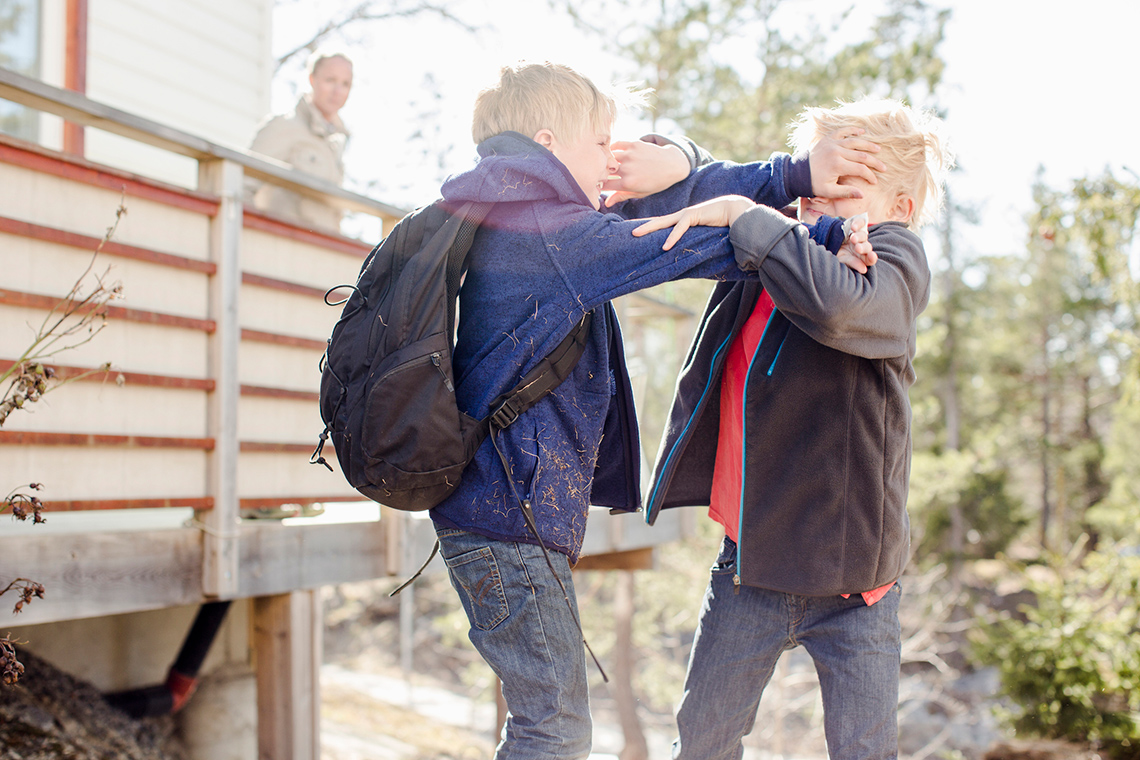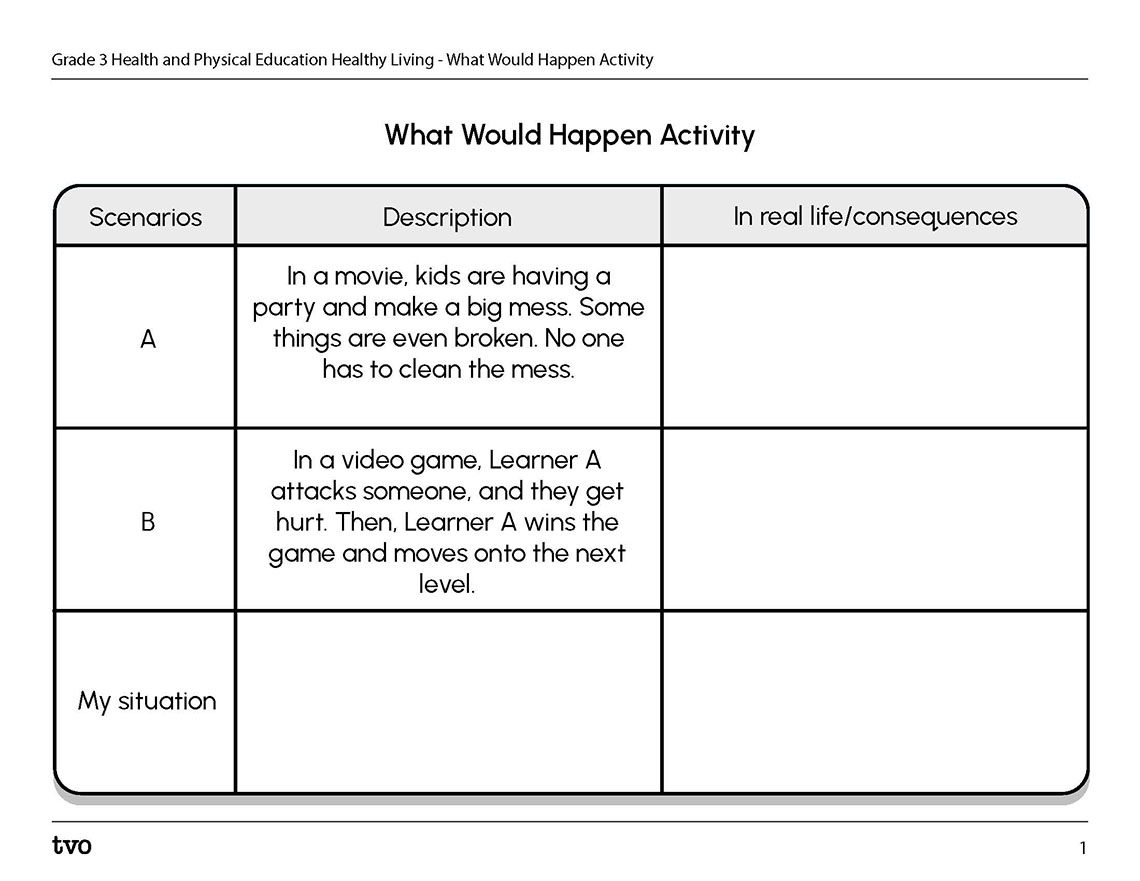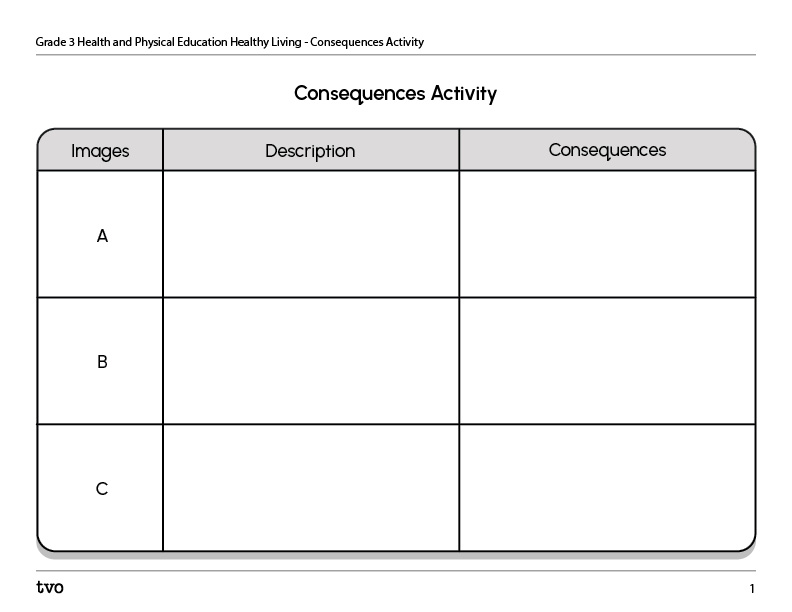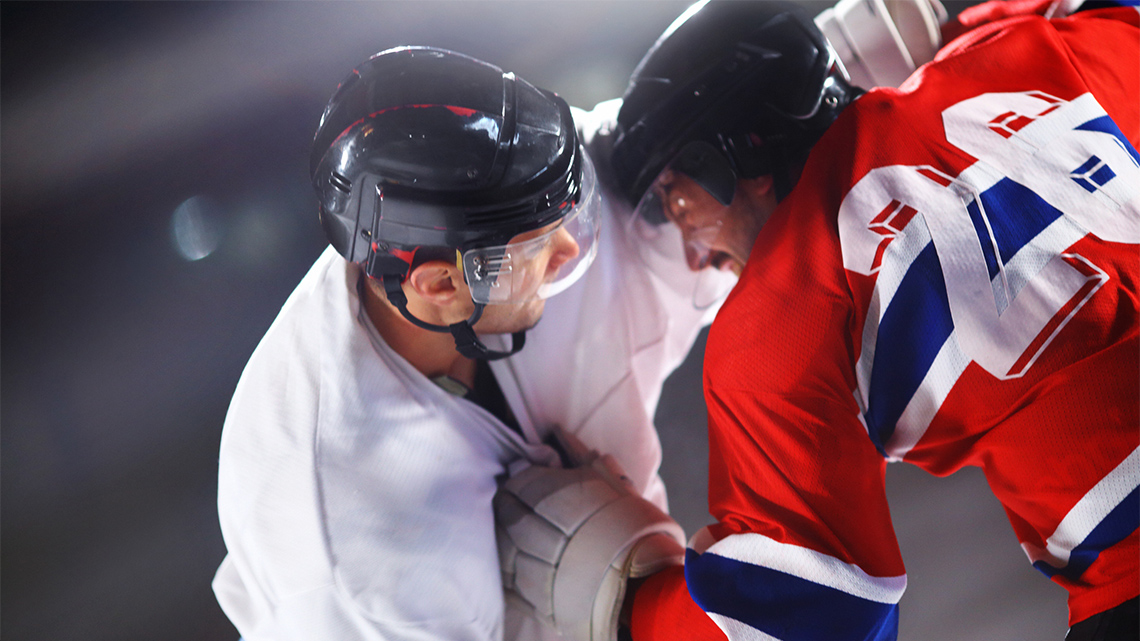Minds On
Consequences
In real life, there are consequences for our actions.
Consequences are dealing with the results of something you have done.
For example, Learner A’s stomach pain was the consequence of eating too much ice cream.
Let’s explore the following images:
Brainstorm
Think about it
1. After exploring the images, describe the action in each image.
2. Then, brainstorm the possible consequences for each image.
Complete the Consequences Activity in your notebook or using the following fillable and printable document. If you would like, you can use speech-to-text or audio recording tools to record your thoughts.
Action
Violence
Violence is a strong force or behaviour that is used to hurt or injure someone or something.
We notice a lot of violence in our everyday lives, especially in video games, television, and movies. Violence can be either fictional or real.
Fictional violence is violence that is not real, but imaginary.
Sometimes we may find fictional violence funny, but real violence can lead to serious injury, and actually hurt people.
Pause and Reflect
Pause and reflect
Reflect on the following:
- Where do you think we can find fictional violence?
- Provide an example of real violence.
Record your ideas in a notebook or another method of your choice.
Press ‘Let’s Check!’ to access possible answers.
Fictional violence can be found in TV, movies, books, video games, apps, posters, and podcasts.
A real violence example is one person pushing another person to the ground.
Fictional violence
Fictional violence is pretend or make-believe.
Fictional violence can be found in online/video games, on cartoon shows, movies, TV, apps, books, and much more!
If a character gets hurt or dies, they come back to life in the next round, because it is imaginary.
When they are hurt, there are no consequences. Also, the players or characters who hurt the other characters do not experience any consequences, because it is fictional.
Student Success
Think-Pair-Share
Reflect on the following scenario:
Learner A is playing a computer game.
In the game, two characters are fighting against each other. Learner A plays until one of the characters die, then starts again.
- What do you think would happen if this was in real life?
- How is it different from a real fight?
- What consequences would there be?
Record your ideas in a notebook or another method of your choice.
If possible, share your answers with a partner.
Press ‘Let’s Check!’ to explore a sample response.
If this happened in real life, those fighting would be injured and may have to go to the hospital.
This is different from real fighting because if a character dies, they can come back to life.
Real people would face the consequences for fighting with each other too.
Note to teachers: See your teacher guide for collaboration tools, ideas and suggestions.
Real violence

In real life, if violence happens, there are consequences.
Someone will get hurt which may end in physical pain, family stress, or even death.
Real violence can be found in the news, school fights, and on TV.
Pause and Reflect
Pause and reflect
How do you think a fight in real life is different from a video game?
Record your ideas in a notebook or another method of your choice.
When you’re ready, press ‘Let’s Check!’ to explore a possible response.
In video games, there are no consequences for the character’s/player’s actions.
Video games are fictional violence, so the character has multiple lives and levels, and the game can be played over and over.
There are consequences for a fight in real life. Someone will get hurt and there is no level to try again, like a game.
In the media
Violence, both real and fictional, is also shown in the media, like TV shows, movies, comic books, graphic novels, music, sport games, and the news.

Sometimes watching violent things on TV or in video games makes our brain think that it is real.
In real life, there are always people and objects that are affected.
It is important to understand the difference between fictional and real-life violence. What we see in the media is not always a real idea of the damage that violence can cause.
Explore the following images to discover how media outlets can demonstrate both real and fictional violence.
Real or fictional?
Do these media outlets demonstrate real or fictional violence, or both?
For each sentence, select the missing word from the drop-down menu.
Consolidation
Learning check!
For each image, decide whether the statements are true or false.
Select the correct answer, then press 'Check Answer' to see how you did.
What would happen?
1. Let’s consider the following situations:
Scenario A: In a movie, kids are having a party and make a big mess. Some things are even broken. No one has to clean the mess.
Scenario B: In a video game, Learner A attacks someone, and they get hurt. Then, Learner A wins the game and moves onto the next level.
- What do you think would happen in these situations in real life?
- What do you think a consequence would be?
2. Then, think of your own fictional scenario and the real-life consequences for your actions.
If possible, share your thoughts with a partner.
Complete the What Would Happen Activity in your notebook or using the following fillable and printable document. If you would like, you can use speech-to-text or audio recording tools to record your thoughts.

Press the Activity button to access the What Would Happen Activity.
Activity (Open PDF in a new tab)Reflection
How do you feel about what you have learned in this activity? Which of the next four sentences best matches how you are feeling about your learning? Press the button that is beside this sentence.
I feel…
Now, record your ideas about your feelings using a voice recorder, speech-to-text, or writing tool.






